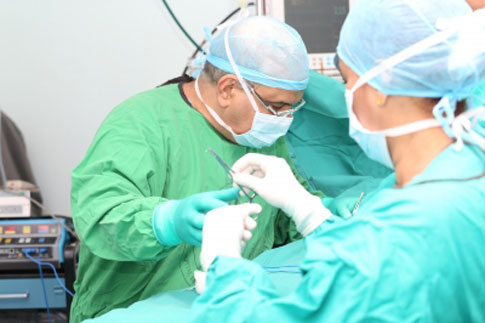Since definitions have shifted over the years, new draft guidance from CDRH spells out regulatory requirements and testing needed for different types of medical gowns.
June 29, 2015

Marie Thibault
If you thought the definition of a "surgical gown" was obvious, think again. FDA has set out its policy on what is and is not a surgical gown in a new CDRH draft guidance, "Premarket Notification Requirements Concerning Gowns Intended for Use in Health Care Settings."
In the draft document, CDRH explains that some health care gowns can be considered surgical gowns while others cannot. This matters to gown manufacturers because gowns that are not designed to be surgical gowns are regulated as Class I exempt devices not subject to premarket notification requirements while surgical gowns are Class II devices subject to premarket notification.
So how does FDA decide what is a surgical gown and what isn't? According to the draft guidance, the decision "is factually driven and generally made on a case-by-case basis . . . the Agency considers a number of factors, including, but not limited to, the terminology used, level of barrier protection claimed, and the device's technological characteristics."
FDA gives manufacturers even more guidelines, explaining that a gown is not a surgical gown if it isn't labeled or described as a surgical gown or is described as only offering "minimal or low barrier protection." On the other hand, FDA defines a surgical gown as a gown that is labeled or described as a surgical gown, is described as offering "moderate or high level barrier protection," or "has statements that it is intended for use during sterile procedures."
For surgical gowns, manufacturers should include the following data with the 510(k) submission, according to the draft guidance:
"Evidence that the gown complies with the claimed barrier performance criteria of the currently FDA-recognized version of ANSI/AAMI PB70, or equivalent standard. ANSI/AAMI PB70 establishes physical performance and documentation requirements for gowns and their materials.
"Performance test data to demonstrate that the gown is an effective barrier in accordance with ANSI/AAMI PB70 barrier performance specifications. Barrier performance testing should be completed on the final, finished, pre-shipment gown, or at the end of the stated shelf life of the gown, as applicable, if the gown is reusable.
"Representative engineering drawing(s), schematics, illustrations and/or figures of the gown that are clear, legible, labeled with the barrier protection levels of the gown, and include dimensions and the location of the critical and non-critical zones.
"Sample labeling that clearly identifies the level of liquid barrier protection per ANSI/AAMI PB70.
"Sample labeling that includes the direction(s) for use and indication(s) for use."
But why the need for clarification now? FDA explains in the draft guidance that a 1988 final rule classified surgical gowns and surgical masks as Class II devices subject to 510(k) premarket review and other surgical apparel were classified as Class I devices, also required to undergo 510(k) premarket review. In 2000, FDA published a final rule that freed this other surgical apparel from premarket notification requirements. Then, in 2004, FDA began recognizing the ANSI/AAMI PB70:2003 standard on barrier protection, but "the definitions and terminology used in this standard are inconsistent with FDA's historical definitions of these terms, and thus have added confusion in the market-place." With this draft guidance, FDA makes it clear that it uses both the labeling/description and the barrier protection level to identify surgical gowns.
Manufacturers will have time to absorb this information. CDRH points out in the draft guidance that "the Agency does not intend to enforce compliance with premarket notification requirements for gowns marketed on or before June 26, 2015 that fall within section IV.b. and do not have an existing 510(k) clearance when manufacturers:
"submit a 510(k) for the gown to the Agency within 60 days of publication of the final guidance;
"have a 510(k) submission for the gown accepted by the Agency for review within 75 days of publication of the final guidance; and
"obtain 510(k) clearance for the gown within 180 days of publication of the final guidance. Manufacturers can bundle multiple gowns within a single 510(k) submission."
Enhance your medtech knowledge by attending MEDevice San Diego, September 1–2, 2015, in San Diego. |
Marie Thibault is the associate editor at MD+DI. Reach her at [email protected] and on Twitter @medtechmarie.
[Image courtesy of DAVID CASTILLO DOMINICI/FREEDIGITALPHOTOS.NET]
About the Author(s)
You May Also Like


